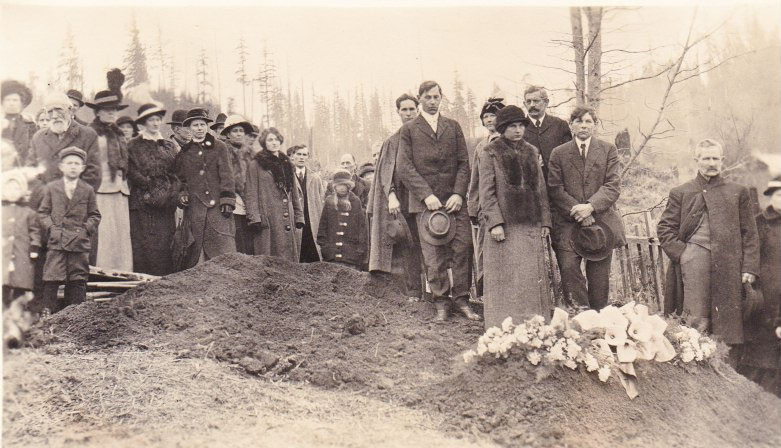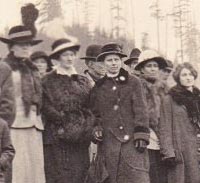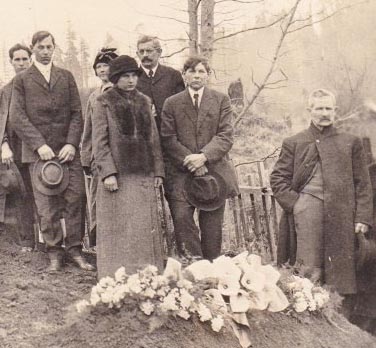Sign up for the Family Tree Newsletter! Plus, you’ll receive our 10 Essential Genealogy Research Forms PDF as a special thank you.
Get Your Free Genealogy Forms
"*" indicates required fields
Our family photo collections are full of pictures of happy occasions, such as weddings, parties and kids having fun.
But sometimes the camera was used to document a sorrowful family history moment. Pam Fisher owns this graveside group portrait from the Shepardson family. She thinks it was taken in southern Washington state.
She also sent along a second photo for comparison. It’s possible her great uncle Ben stands in the back row on the right of this group photo. Next week, I’ll compare the two images and see if that’s possible.
Before I do that, though, I need to study the clues in this picture. If these clues suggest the picture was taken after Ben’s death, then he naturally won’t be in the crowd. “When was it taken?” is the first question to answer.
Hats are a great piece of evidence to determine a photo’s time frame. Sometimes women held on to favorite hats for years. In other cases, a woman who couldn’t afford to update her entire wardrobe would purchase a new hat to look more fashionable. The hats in this group date from about 1919. Each one has a brim and a rounded crown, typical details from that time frame.
The people at the grave are likely close relatives to the deceased.
So who died? The size of the grave and the two people standing closest offer insights into who’s buried there. It’s a small grave. Standing behind the mound is a man and a woman. They don’t look very old. I’m wondering if they could be parents of a child who died. They might also be siblings of the deceased.
The expressions on their faces convey their deep sadness over the loss of this person. Behind them stands a middle-aged man. An older man with similar features to the first middle-aged man stands to the side. They could be grandparents.
It’s important to remember that this picture represents a gathering of family and friends. It’s a useful family history document.
- Who died? Study family history to see who dies circa 1919. The flu epidemic of 1918/1919 occurred in three waves in those years. Perhaps the deceased contracted that illness.
- Who’s in the family group? If the man in this grouping is great-uncle Ben, this information may help to identify the couple in front of the grave.
- Who else is at the funeral? I’d look at the family tree again to see who lived in southern Washington state circa 1919, then examine family photos for pictures of those individuals. Next step is to compare those pictures to the faces in the crowd.
The lack of foliage in the background and the mourners’ heavy coats suggest it’s cold outside. These details further narrow the time period. It’s winter or spring of 1918/1919.
While this image depicts a sad moment for Pam’s relatives, for their descendants the very existence of this picture is worth celebrating.
Next week I’ll try to spot great uncle Ben.
Identify your old mystery family photos with these guides by Maureen A. Taylor:







